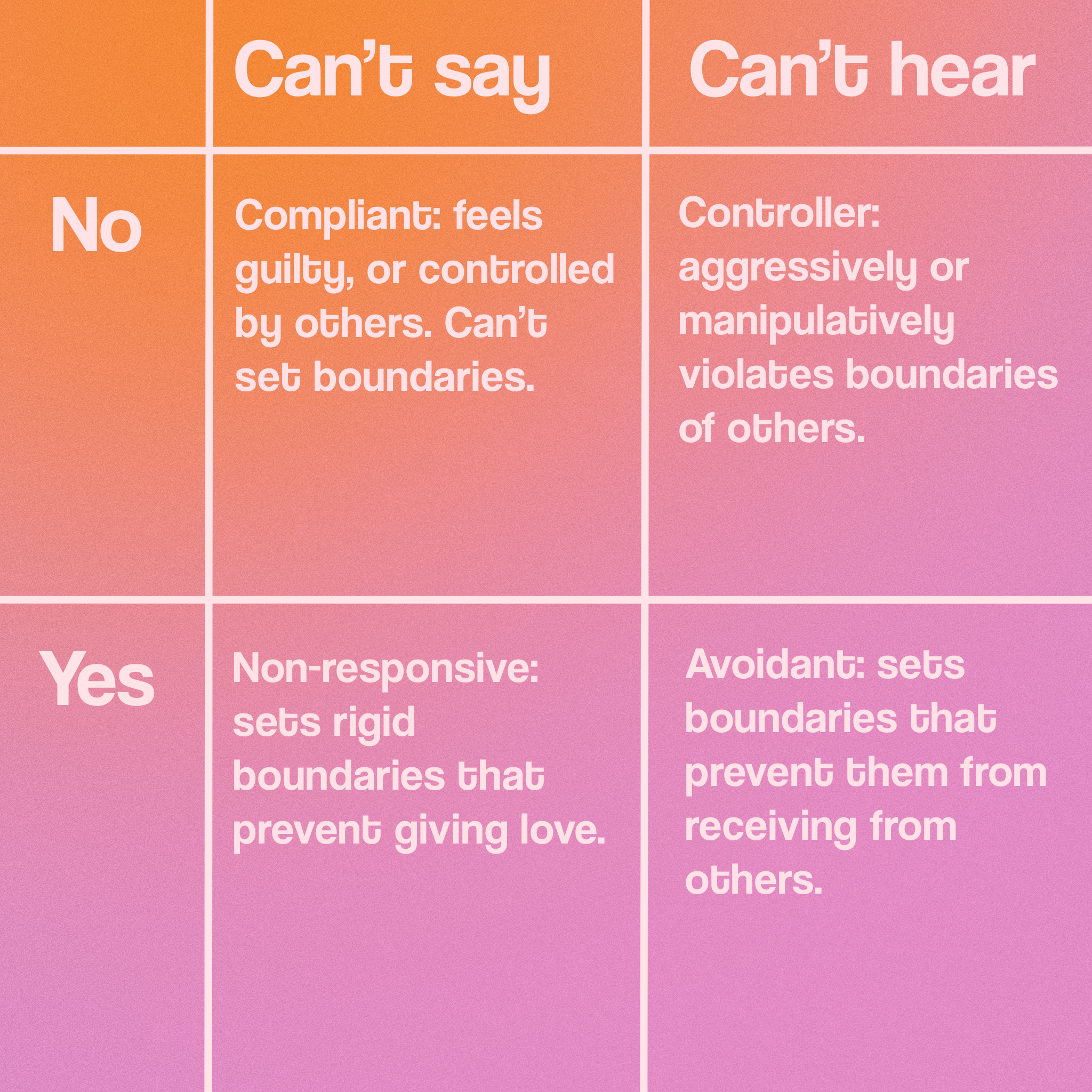Boundaries
What they are, and how to set them.
image: @hannezaruma
Boundaries are limits that we set for ourselves in our relationships with other people.
People who have healthy boundaries, can say no to others when they need to, and can be open to being intimate in their relationships.
People who keep others at a distance, whether that be emotionally, physically, or otherwise, have rigid boundaries.
People who get over involved with others have porous boundaries.
Porous people will often:
Over share personal information
Have difficulty saying ‘no’
Fears rejection if they do not comply
And be somewhat dependent on the opinions of others
Rigid people will often:
Avoid being vulnerable with others
Be unlikely to ask for help
Come across as detached, cold, protective
Keeps others at a distance to avoid rejection
image: @thundergirl_xtal
Health people will often:
Not compromise their values
Share information in an appropriate way
Know their wants and need, and communicate them
Be comfortable saying ‘no’, and accept when others tell them ‘no’.
The appropriateness of different boundaries can rely on context and setting. While having rigid boundaries at work might be appropriate, it may not be with close family and friends.
Boundary styles can also be cultural, which means we may have been raised with different understanding of what boundaries are appropriate when.
There are many kinds of boundaries we can set in our relationships with others. This includes physical, emotional, sexual, time, and intellectual boundaries.
Physical boundaries involve the limits and appropriateness of touch to our physical body. Healthy physical boundaries include an understanding of when, and who is entitled to physical touch in relation to your body, and personal space. An example of a physical boundary violation include someone reading your journal, or touching you inappropriately.
Emotional boundaries are the limits we create in regards to our feelings. It may not feel nice to have someone dump their emotional state onto us. Healthy emotional boundaries look like disclosing emotional states gradually over time. Emotional boundaries are violated when our feelings are belittled, criticised, or invalidated by others.
Sexual boundaries are the limits we have in regards to our sexuality. This can include whether or not we disclose our sexual orientation, preferences, or past sexual partners. Healthy sexual boundaries involve communication between partners, and the ability to know and assert your needs. A violation of sexual boundaries looks like unwanted sexual touch, coercion, or harassment.
Time boundaries are the limits we set with how we spend our time. Healthy time boundaries look like having enough time for the different components of our lifestyles. Our time boundaries can be violated when others demand too much of our time.
Intellectual boundaries are limits we set in regards to our thoughts and ideas. Healthy intellectual boundaries involve a mutual respect for ideas, and appropriate discussion e.g discussing the weather, or politics. A violation of these boundaries looks like someone invalidating or dismissing your ideas.
image: @charlotteabramow
All boundaries can be backed up with consequences. This shows people how seriously we aim to take our own needs, as well as live by our values.
Creating consequences can be difficult because it requires not only the energy of setting the boundary, but following through.
This can look and sound like:
“I’ve asked you not to talk about the vaccine while we’re together. If you bring it up again, I will leave until you are ready to take my boundary seriously.”
(Intellectual boundary)
“I know we’ve come out of lockdown, but I’m not up for socialising tonight. I’m going to spend the night in and if you continue to hassle me about it I’ll mute your messages.”
(Emotional and time boundary)
Boundary Injuries:
When people are disrespectful of our boundaries, mock them, or attempt to push them, we can experience a boundary injury.
We can experience issues with boundaries if we sit in one of these four quadrants:
A boundary injury sounds something like:
“Oh come on! We’ve been in lockdown for so long, just come out for one drink!”
(Emotional and time violation)
“I’m just saying I read something about the vaccine! I’m just telling you what I learnt because I thought it would help you!”
(Intellectual violation)
Executing effective boundaries requires us to take responsibility for our choices, and be open and honest about our needs.



